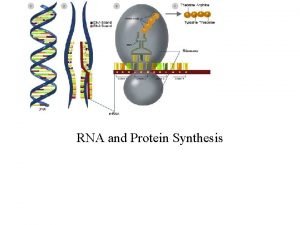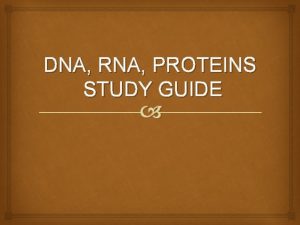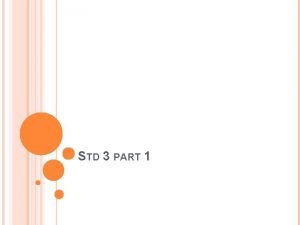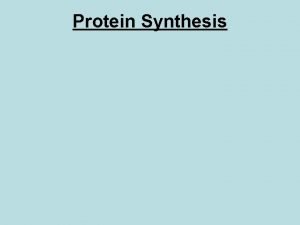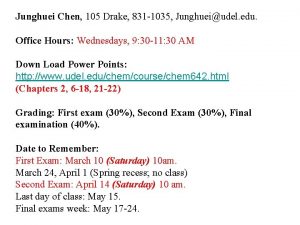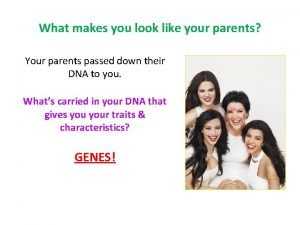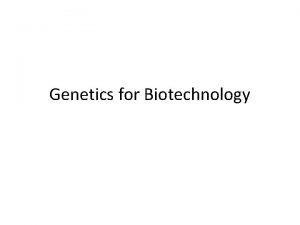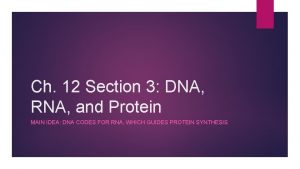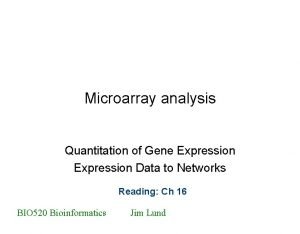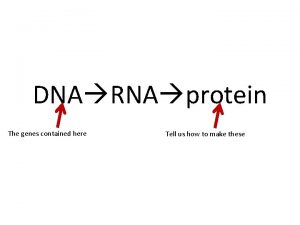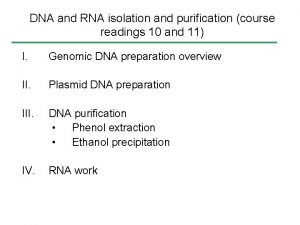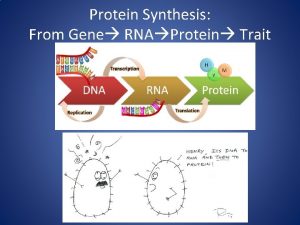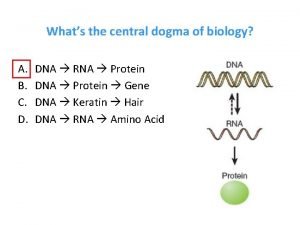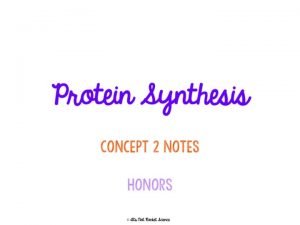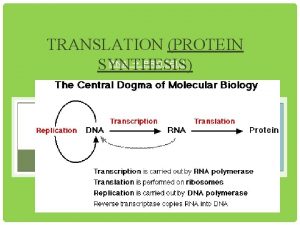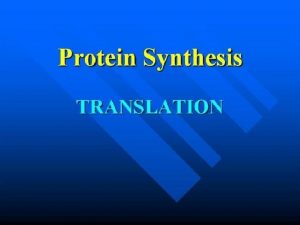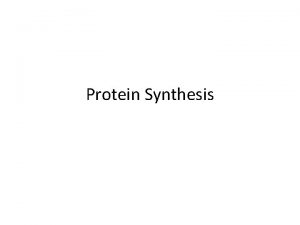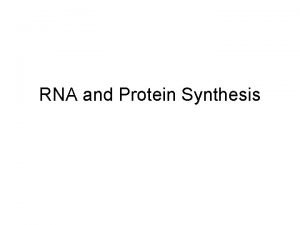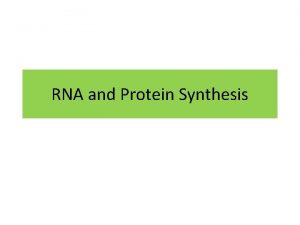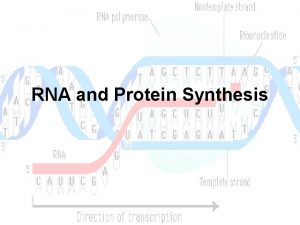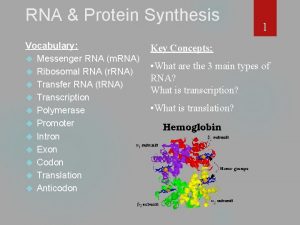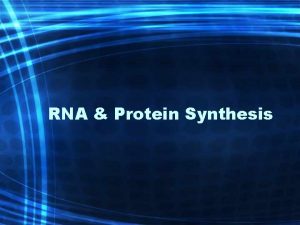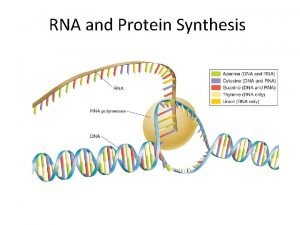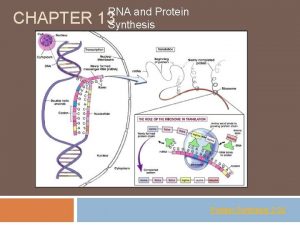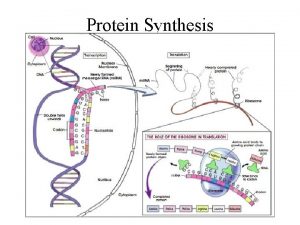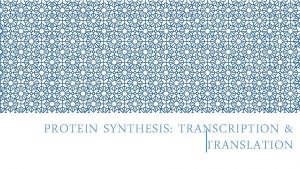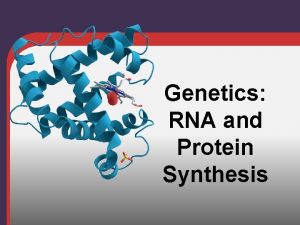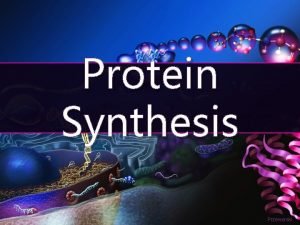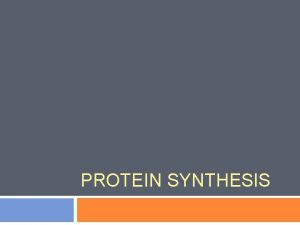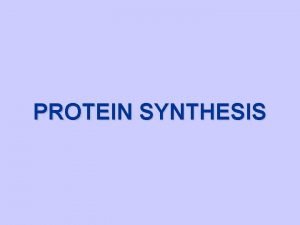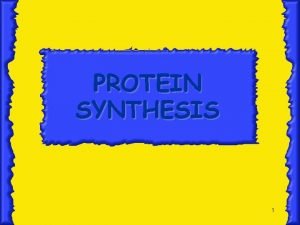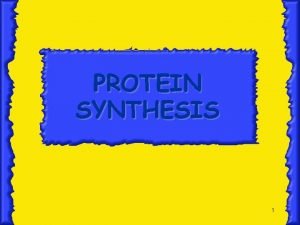RNA PROTEIN SYNTHESIS THE PROCESS OF MAKING PROTEINS

























- Slides: 25

RNA & PROTEIN SYNTHESIS THE PROCESS OF MAKING PROTEINS

THE STRUCTURE OF RNA ¡ ¡ Made of long chains of nucleotides Sugar = ribose Single stranded Uracil replaces thymine Major differences of DNA and RNA The sugar of DNA is called deoxyribose DNA has thymine not uracil DNA is a double strand (double helix)

3 TYPES OF RNA Messenger RNA (m. RNA) – carries copies of instructions from the DNA (serve as messengers from the DNA to rest of cell). ¡ Ribosomal RNA (r. RNA)– proteins that make up ribosomes. ¡ Transfer RNA (t. RNA)– transfers amino acids from m. RNA to the ribosome. ¡

TRANSCRIPTION Transcription – RNA molecules are produced by copying part of the nucleotide sequence of DNA into a complementary strand. ¡ RNA polymerase: enzyme that helps unwind and unzip the DNA strand. ¡ ¡ http: //207. 4. 198/pub/flash/26/ transmenu_s. swf

¡ ¡ ¡ ¡ During transcription: RNA polymerase binds to DNA It then separates the strands of the double helix RNA polymerase uses one strand as a template or model Nucleotides are assembled into a strand of RNA based on what nucleotides the DNA has. DNA: AATTGGCC RNA: UUAACCGG

Section 12 -3 TRANSCRIPTION Adenine (DNA and RNA) Cystosine (DNA and RNA) Guanine(DNA and RNA) Thymine (DNA only) Uracil (RNA only) RNA polymerase RNA Go to Section: DNA

HOW DOES RNA POLYMERASE KNOW WHEN TO START & STOP There are certain nucleotide sequences on the DNA that the enzyme will bind to = promoter. ¡ The promoter is the signal so that RNA polymerase knows where to begin on the DNA molecule. Remember how big DNA is. ¡ A similar signal stops transcription. ¡ ¡ http: //www. fed. cuhk. edu. hk/~johnson/teac hing/genetics/animations/transcription. htm

The Genetic code Your body is made mostly of proteins. ¡ Proteins are made when amino acids are joined together in long chains called polypeptides. ¡ Properties of proteins including how they function is determined by the order of amino acids in the polypeptide chain. ¡ The language of m. RNA is called the genetic code ¡

Interactive: transcribe then translate. ¡ http: //learn. genetics. utah. edu/content /begin/dna/transcribe/ Interactive: compare dna replication and protein synth ¡ http: //www. pbs. org/wgbh/aso/tryit/dn a/shockwave-nojs. html ¡

RNA is made of four bases: A, U, G, C. ¡ The code is written in a language uses just these four letters. ¡ The code is read 3 letters at a time so that each “word” of the coded message is 3 bases long. ¡ Each 3 letter “word” in RNA is called a codon. ¡

CODONS ¡ ¡ Codon – 3 consecutive nucleotides that specify a single amino acid that is added to a polypeptide chain. Bases on RNA: UCGCACGGU Broken in 3’s: UCG-CAC-GGU Amino acids the bases code for. Serine – Histidine – Glycine There are 20 amino acids in all. Every protein in the world is a different arrangement of these 20 amino acids. It like the 26 letters of the alphabet can make uncountable words. 20 amino acids makes uncountable numbers of amino acids.

64 POSSIBLE CODONS

TRANSLATION Translation – the cell uses the information from m. RNA to make proteins. ¡ Takes place in the ribosomes. ¡ The ribosome reads the message. ¡ ¡ http: //207. 4. 198/pub/flash/26/ transmenu_s. swf

1 st & 2 nd Steps ¡ ¡ ¡ ¡ After transcription of DNA in the nucleus, the m. RNA leaves the nucleus, goes through the cytoplasm and to the ribosome. m. RNA attaches to a ribosome. t. RNA brings amino acids to m. RNA on the ribosome. t. RNA has a 3 base code that is complimentary to the 3 base code of m. RNA. 3 bases on the t. RNA = anticodon. Anticodons match up with codons. m. RNA codon: UUC t. RNA anticodon: AAG

¡ ¡ ¡ t. RNA has the anticodon so that it knows what amino acid to bring. The ribosome will form a peptide bond between the first two amino acids. Then t. RNA goes to get another A. A. This continues until the polypeptide chain (protein) is finished. until it reaches a stop codon on the m. RNA. It then releases the polypeptide chain.

Translation: m. RNA and t. RNA Nucleus Messenger RNA is transcribed in the nucleus. Phenylalanine t. RNA The m. RNA then enters the cytoplasm and attaches to a ribosome. Translation begins at AUG, the start codon. Each transfer RNA has an anticodon whose bases are complementary to a codon on the m. RNA strand. The ribosome positions the start codon to attract its anticodon, which is part of the t. RNA that binds methionine. The ribosome also binds the next codon and its anticodon. Ribosome Go to Section: m. RNA Transfer RNA Methionine m. RNA Lysine Start codon

Translation continued: FORMING THE POLYPEPTIDE CHAIN The Polypeptide “Assembly Line” The ribosome joins the two amino acids— methionine and phenylalanine—and breaks the bond between methionine and its t. RNA. The t. RNA floats away, allowing the ribosome to bind to another t. RNA. The ribosome moves along the m. RNA, binding new t. RNA molecules and amino acids. Lysine Growing polypeptide chain Ribosome t. RNA m. RNA Completing the Polypeptide m. RNA Go to Section: Ribosome Translation direction The process continues until the ribosome reaches one of the three stop codons. The result is a growing polypeptide chain.

Concept Map RNA can be Messenger RNA also called which functions to m. RNA Go to Section: Ribosomal RNA Carry instructions also called which functions to r. RNA Combine with proteins from to to make up DNA Ribosomes Transfer RNA also called which functions to t. RNA Bring amino acids to ribosome


Proteins Nearly everything in life is made of proteins. ¡ Many proteins are enzymes that act as catalyst for chemical reactions. (they speed up reactions) ¡ Flower colors, pea shape, eye color etc. ¡ Mendel would have been surprised about this. ¡

Summary: Protein synthesis takes place in 2 steps: ¡ Transcription and translation ¡ Transcription: ¡ DNA unzips ¡ m. RNA is made by complimentary base pairing ¡ Happens in the nucleus. ¡

Translation: ¡ m. RNA leaves the nucleus and goes to the ribosome. ¡ At the ribosome, a specific protein is made. ¡ This is done by t. RNA adding amino acids to a growing chain. ¡ http: //library. thinkquest. org/20465/g_D NATranscription. html ¡

¡ http: //www. edumediasciences. com/en/a 71 -proteinsynthesis

GCC: AUG: UUU: : ACG: CGU: TTT:

CCC: GCA UUU AUG AGG AAA CGC ATG:
 Totipotent cell
Totipotent cell Section 12 3 rna and protein synthesis
Section 12 3 rna and protein synthesis Messenger rna codons
Messenger rna codons Dna rna and protein synthesis study guide
Dna rna and protein synthesis study guide Chapter 11 dna and genes
Chapter 11 dna and genes Rna transfer
Rna transfer Dna rna and proteins study guide answers
Dna rna and proteins study guide answers Which best summarizes the process of protein synthesis?
Which best summarizes the process of protein synthesis? Steps of protein synthesis
Steps of protein synthesis Synthesis of rna
Synthesis of rna Dna rna protein central dogma
Dna rna protein central dogma Mutations quiz
Mutations quiz Chapter 12 section 3 dna rna and protein
Chapter 12 section 3 dna rna and protein Dna rna protein
Dna rna protein Dna rna protein
Dna rna protein Dna rna protein diagram
Dna rna protein diagram Protein
Protein Restaurant analogy
Restaurant analogy Protein synthesis splicing
Protein synthesis splicing Protein synthesis gcse
Protein synthesis gcse Missense mutation in sickle cell anemia
Missense mutation in sickle cell anemia Dna cookbook analogy
Dna cookbook analogy Elongation
Elongation Protein synthesis
Protein synthesis Protein synthesis
Protein synthesis Protein synthesis
Protein synthesis





